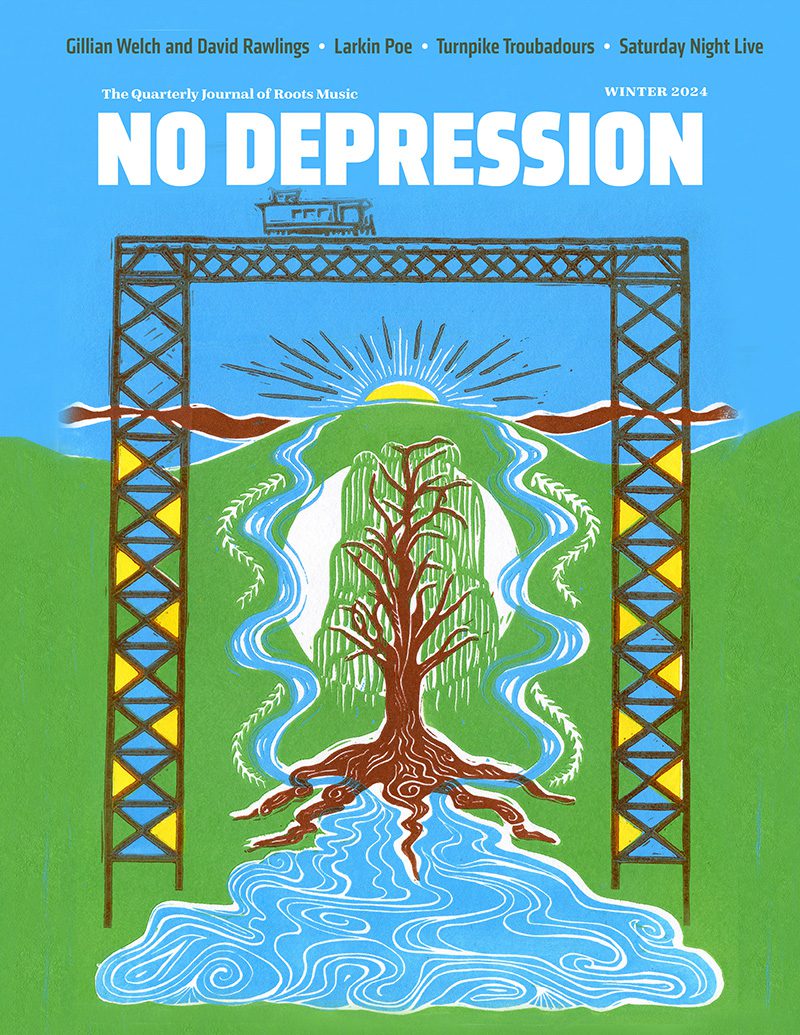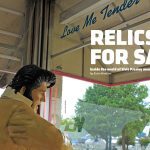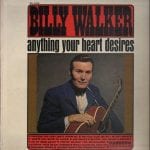Five Gears in Reverse
Though they were the books of the summer, Jonathan Franzen‘s Freedom and Jennifer Egan‘s A Visit from the Goon Squad share the dying-light chill of autumn, uneasy reminders that the honey of nostalgia soon ferments into the vinegar of regret. Both deploy central characters who make, promote, or obsess about music — and two who make similar transformations from unsung punk rockers to successful, if conflicted, purveyors of acoustic/alt-country. Such characters surround us: the formerly angry young men of the 70s who share their discovery of mandolins and murder ballads now that the days of pillage and plunder recede in the rear-view. But it is remarkable that two musically well-informed authors who commandeered the literary discussion (Time covers, countless interviews – Oprah!) based characters and plot on similar musical journeys. Are banjos and steel guitars now the universal symbol of authenticity – or evidence of our exhaustion?
Franzen‘s Freedom balances a family portrait on the fulcrum of a romantic triangle: earnest, liberal Patty and Walter Bergland and punk rocker-turned-alt-bard Richard Katz. The Berglands need Katz because he embodies the memory of youth’s daring, as houses, kids, and the aggravations of the privileged pale the present. They keep Katz orbiting their lives until missed connections from the past pierce the equable present, leaving anger and disappointment to lead the dance before the story fades to a wintry acceptance. The rupture generates enough real feeling in Katz to produce a suite of personal songs that become an unlikely hit, songs that spring from a rural retreat and his sudden mastery of the banjo. The recording is attended by critical acclaim, NPR interviews and name-checking by supposed fans such as Tweedy and Stipe. But the longed-for success rings hollow once achieved. Franzen draws the post-punk scene in Minneapolis in sharp detail, and Katz’s story casts an acid light on the way we recapture our musical memories and reassure ourselves that we were there by embracing the heroes of our youth only after we’ve left them to stew in obscurity for decades.
A Visit from the Goon Squad also contemplates time, skipping skillfully through years and interwoven stories, lighting here and there on the San Francisco punk scene revolving around Mabuhay Gardens, on New York record-label offices, on promoters and publicists, and finally on a haunted musician in the very-near-future who reaches a mass audience by wielding a steel guitar, singing for mobile-device-waving infants. Egan, who attended Mabuhay Gardens shows as a teenager, knowingly depicts both late-70s punk rock and the endless, restless sifting of today’s music. Egan clearly understands the tension between rock’s license to let go completely and the fear of losing everything. She observes the collision of real punks, the ones who knew this was their one and only chance for meaning, with those outside the mosh pit who knew that one day they would wipe off the mascara and wash out the hair dye. In Scotty Hausmann, a peripheral character who is, like Katz, a vessel for others’ ambitions and desire, Egan completes the cycle of punk rock flame-out, years of neglect and self-abuse, and rediscovery when audiences are ready to respond to the vulnerability of a song and a slide guitar. Egan describes Hausmann’s breakthrough show:
“It may be that a crowd at a particular moment of history creates the object to justify its gathering, as it did at the first Human Be-In and Monterey Pop and Woodstock. Or it may be that two generations of war and surveillance had left people craving the embodiment of their own unease in the form of a lone unsteady man on a slide guitar.”
So we simultaneously celebrate the literate, pre-modern preoccupations of Elvis Costello‘s National Ransom and the bile of Get Happy!!!. National Ransom further develops with music hall, acoustic folk and country elements the T-Bone Burnett-led Sugarcanes sessions that produced Secret, Profane and Sugarcane and a tour of the bluegrass circuit. Noel Murray in AV Club hilariously notes in a generally positive review, “National Ransom … falls too often into the ‘venerable old rocker’ trap of thinking that music is better the more it sounds like it could’ve been recorded by Alan Lomax.” Is that what we want now? The heroes of our rock past wearing the badge of authenticity that folk and country bestows? Punk rock meant to make us uneasy, to upset everything in its path — music, art, fashion and politics. It may have swept up genres and unsung heroes as it careened through the culture, but it moved always, relentlessly forward. Now we find ourselves in a cultural cul de sac, circling an ever-increasing pile of digital memory, responding only to echoes. Maybe the music of the past is the only punk rock we can handle now, unsettling at times, but made for diminished bodies and spirits, driving relentlessly in reverse.
Regular posts at Huffington Post
Story archive at Smoke
(Franzen photo by Greg Martin; Egan photo by Pieter M. Van Hattem/Vistalux)





